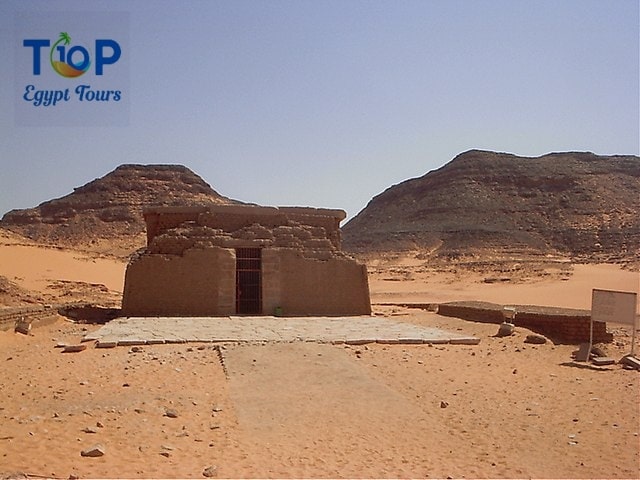The Temple of Amada, Nestled amidst the captivating landscapes of Nubia, the Amada Temple stands as a testament to the architectural brilliance and cultural heritage of ancient Egypt. Also known as the Temple of Amada, this remarkable temple complex offers visitors a mesmerizing glimpse into the grandeur and religious devotion of the New Kingdom pharaohs. With its historical significance, architectural splendor, and connection to the rich tapestry of ancient Nubian civilization the Amada Temple is a captivating attraction in Egypt.
In this article, we will uncover for you The Temple of Amada with Top Ten Egypt.
Architectural Splendor of The Temple of Amada:
The Amada Temple showcases impressive architectural features that reflect the mastery of ancient Egyptian craftsmanship. Constructed during the 18th Dynasty, the temple complex features towering sandstone walls, imposing columns, and intricately carved reliefs. The temple’s entrance, adorned with colossal statues and decorated pylons, creates a majestic gateway that transports visitors into the world of ancient Egypt.
Historical Significance:
The Amada Temple holds immense historical and cultural significance. Built by Pharaoh Thutmose III and later expanded by Seti I and Ramses II, the temple served as a religious center dedicated to the worship of various deities, including Amun-Re and Re-Horakhty. The temple’s inscriptions and reliefs provide valuable insights into the religious beliefs, royal lineage, and historical events of the New Kingdom, allowing visitors to connect with the rich heritage of ancient Egypt.
Cultural Heritage Preservation:
The preservation of the Amada Temple is a testament to Egypt’s commitment to safeguarding its cultural heritage. With the construction of the Aswan High Dam and the subsequent creation of Lake Nasser, the temple faced the risk of submergence. However, an international effort led to its relocation to higher ground, ensuring its protection and preservation for future generations to admire and study.
Artistic Treasures:
Within the Amada Temple, visitors can marvel at the exquisite reliefs and carvings that adorn the walls, columns, and sanctuaries. The temple’s artwork depicts religious scenes, pharaonic rituals, and historical events, showcasing the artistic achievements and attention to detail of ancient Egyptian artisans. The intricate hieroglyphics and vibrant colors on the temple’s walls provide a captivating glimpse into the religious beliefs, cultural practices, and historical narratives of ancient Egypt.
Cultural Experience and Connection:
Exploring the Temple offers visitors a unique opportunity to immerse themselves in the ancient Nubian civilization and its influence on Egypt. The temple’s location in Nubia, amid the scenic landscapes and remnants of other ancient structures, creates a sense of exploration and discovery. Visitors can connect with the history and ambiance of the site, gaining a deeper appreciation for the cultural exchange and shared heritage between Egypt and Nubia.
Conclusion:
It also known as the Temple of Amada, stands as a testament to the architectural splendor, historical significance, and cultural richness of ancient Egypt’s New Kingdom. With its captivating design, historical importance, and connection to the ancient Nubian civilization, the temple complex offers visitors an enchanting journey into the past. As they explore its grandeur, marvel at its artistic treasures, and embrace the cultural heritage of Nubia, visitors are transported to a bygone era, deepening their connection with the enduring legacy of ancient Egypt and the remarkable civilizations that thrived in the region.
Browse our complete list of Egypt tours Click Here



Comment (0)